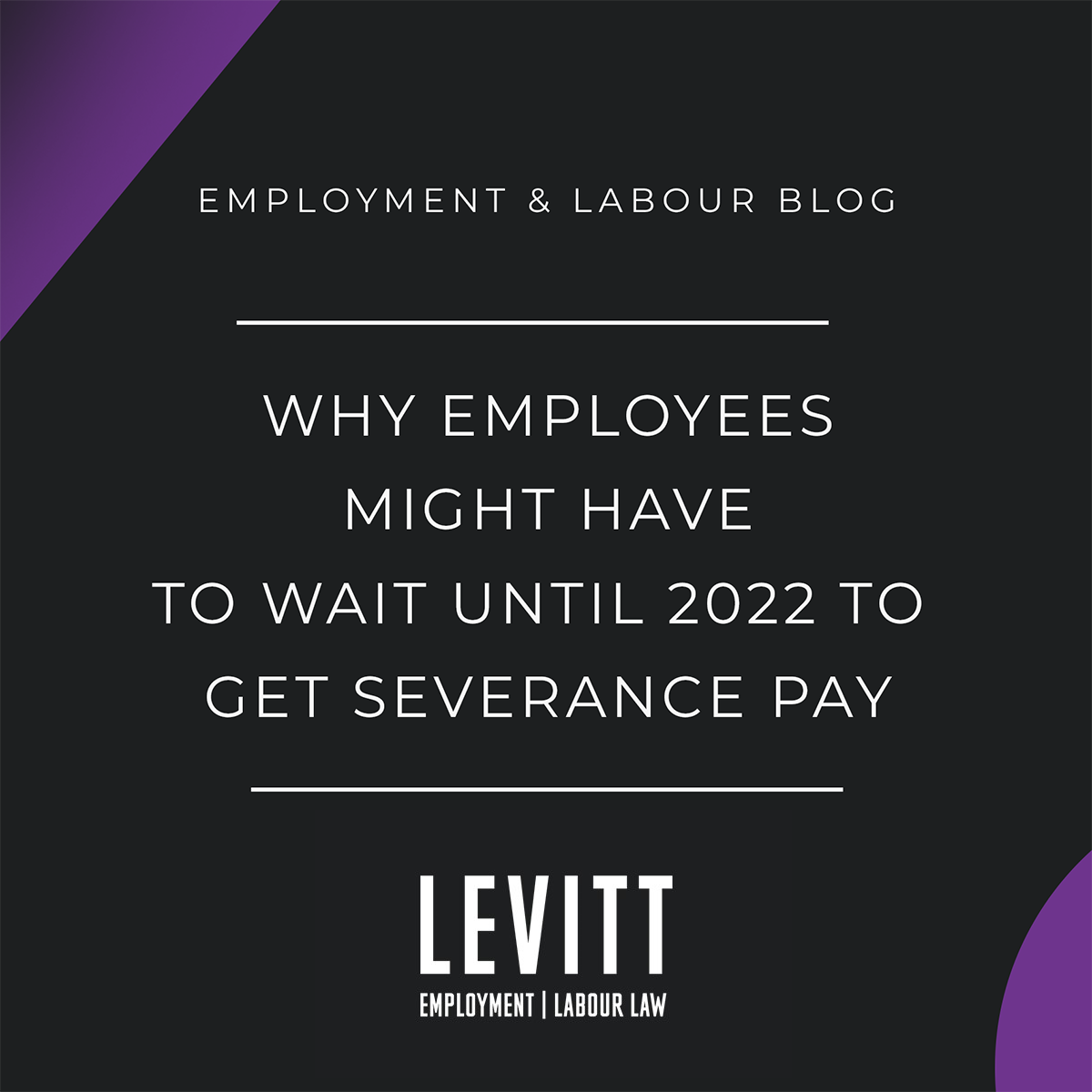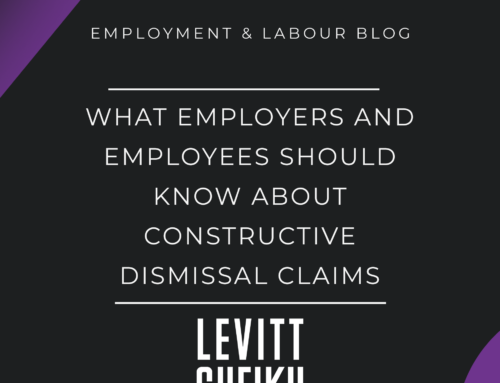When the pandemic hit in March 2020, many companies were forced to lay off a large portion of their staff because they were unable to adequately pay them without becoming insolvent. These layoffs were a huge hit to the economy because it left a large portion without any income to support them, except for government initiatives. In the early days of the pandemic, employees who were laid off were told they were absolutely able to sue for constructive dismissal as long as they were non union, had not been laid off previously and their contracts did not permit a layoff. Many did not want to burn their bridges in hopes of being recalled shortly after the pandemic was over — but as we know that did not happen. After a certain amount of time employees are no longer able to sue for constructive dismissal, and unfortunately, that time has passed for many.
Those employees were in limbo, and were hoping that the Ontario government would come to their rescue. The Employment Standards Act, 2000 (ESA) permits companies to layoff employees temporarily for either 13 weeks (without benefits) or 35 weeks (with benefits or substantial payments). Some employees, who were laid off without benefits, were banking on receiving their statutory termination pay and severance pay when the ESA layoff period ended. However, as the 13 week mark neared, the government enacted the Infectious Disease Emergency Leave (IDEL) legislation. Consequently, most employees who laid off were converted to a job protected emergency leave, which meant that these laid off employees would not be able to collect termination pay or severance pay until after the IDEL ended, which was originally September 2020, then early January 2021 and then pushed again until July 3, 2021.
To be clear, in Ontario, severance pay is a type of compensation provided to employees with five or more years of service (and who work for a company with an annual payroll of at least $2.5 million) when they are terminated without cause or their employment has been otherwise severed. In those cases, employees are entitled to severance pay, which amounts to one week per year of service (or partial year of service on a pro-rated basis) up to a maximum of 26 weeks.
Under the Employment Standards Act, a person’s employment is “severed” when their employer:
- Dismisses an employee due to the bankruptcy or insolvency of the company;
- “Constructively” dismisses the employee and the employee resigns in response within a reasonable time;
- Lays the employee off for 35 or more weeks in a period of 52 consecutive weeks;
- Lays the employee off because all of the business at an establishment closes permanently; or
- Gives the employee written notice of termination and the employee resigns after giving two weeks’ written notice, and the resignation takes effect during the statutory notice period.
Under the ESA, employees are also entitled to notice or pay in lieu of notice, which is known as the statutory notice period or termination pay. This period amounts to one week for each completed year of service up to a maximum of eight weeks. However, employees with service between three months and one year are entitled to one week notice and those with between one and three years are entitled to two weeks’ notice. During this period, the employer cannot alter an employee’s wages or any term or condition of employment, meaning everything the employee received while working (i.e. salary, benefits, car allowance, vacation pay, etc.) should continue for the statutory notice period.
Due to this deferral of the end of IDEL period, and the bailout of companies by the Ontario government, it is possible that those employees who were laid off will not be able to receive their entitlements on termination (i.e. termination pay and severance pay) until 2022 if the government pushes back the deadline yet again.
If you want to learn more about your own employment law case, please contact Levitt LLP today.






